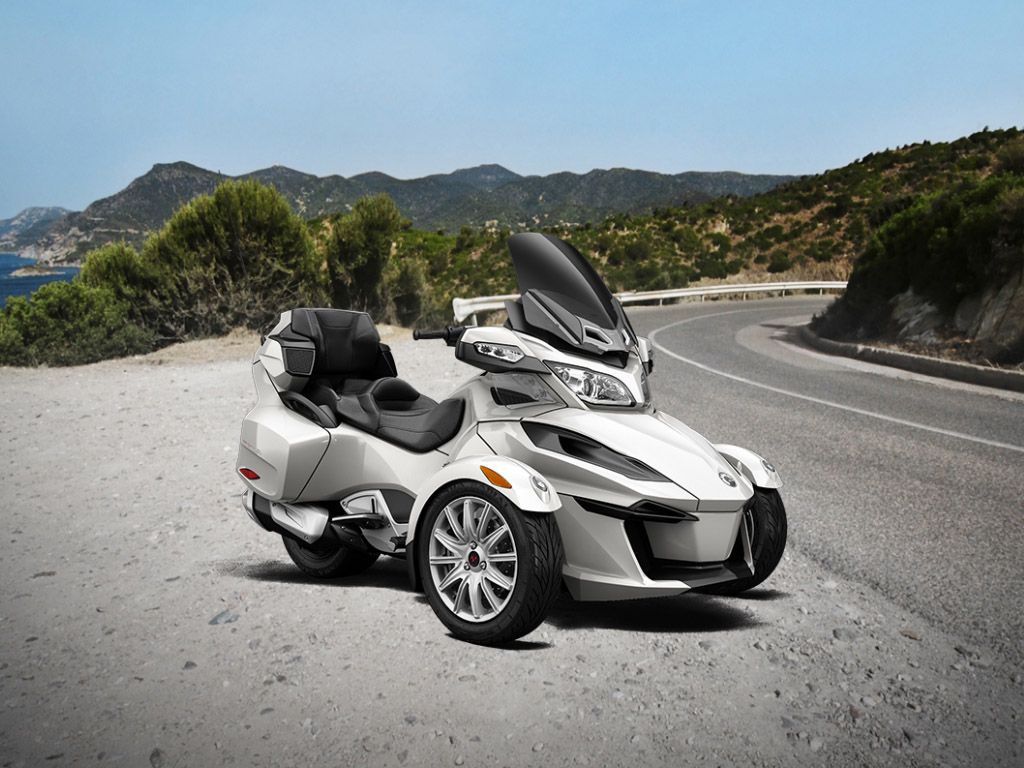The Can-Am Spyder RT is apparently not immune to the recall bug. That much we now know after Bombardier Recreational Products announced a recall of over 5,000 units of the 2013 Can-Am Spyder RT over what it claims as problems involving “excessive heat” in the engine compartment. Wait, isn’t that a normal occurrence on any engine? Not so, BRP, says, because this particular issue could result in skin burns for the rider, and worse, fire.
Yep. Anytime the word ‘fire’ is uttered in recall issues, you’re going to want to listen.
As such, BRP is advising owners of the 5,165 affected units of the Can-Am Spyder RT to refrain from keeping their rides idle for long periods of time or ride them slow in traffic. That’s easier said than done for heavy-footed riders, but the issue is serious enough that it needs to be addressed, at least until the company has the necessary components to repair whatever ills these rides.
Turns out, BRP still doesn’t have these parts to perform an actual recall so it might be best to just refrain from using the Can-Am Spyder RT at all. It’s a tough thing to ask riders who have no other modes of transportation readily available to them so if that’s not an option, the aforementioned suggestions will suffice for now.
Stay tuned and keep your ears to the ground to know when BRP is ready to begin the recall. But for now, try to adhere to these precautions because you never know how it might turn out for you.
Click "continue reading" to read more about the BRP's recall of the Can-Am Spyder RT.
Why it matters
You probably know the script by this time so there’s really no need rehashing it. Ok, maybe there is, especially for those who have yet to experience the hassle of a recall.
See, recalls are annoying. They really are. But they’re also important because they’re almost always done when a certain company finds out that something is wrong with a product they’ve already released to the market. On the one hand, a company can just let it go without notifying the public, praying that these issues don’t actually occur in real road situations. That approach is not only dumb, it’s also extremely dangerous.
The prudent thing to do in these situations is to make sure that there really is a problem. Once that’s been determined, a company notifies relevant authorities - in this case the National Highway Transportation Safety Administration - and fills them in. From there the recall is announced, wherein a company informs the public that certain models have problems within themselves that need to be fixed. The company then urges owners of affected units to bring their rides to their local dealerships where they will be repaired free of charge.
That, in a nutshell, is a how a recall works. Also, as an owner, if you’re model falls under the affected units of a recall, the smart thing would be to heed these calls and bring your model to the dealerships so it can be fixed. You don’t want to be that person who shrugs off a recall and then ends up paying for it.
BRP has yet to officially announce a recall, but if you’re an owner of a 2013 Can-Am Spyder RT, you might want to hold off on using that ride until there’s some clarity to the reported problems plaguing the model.

